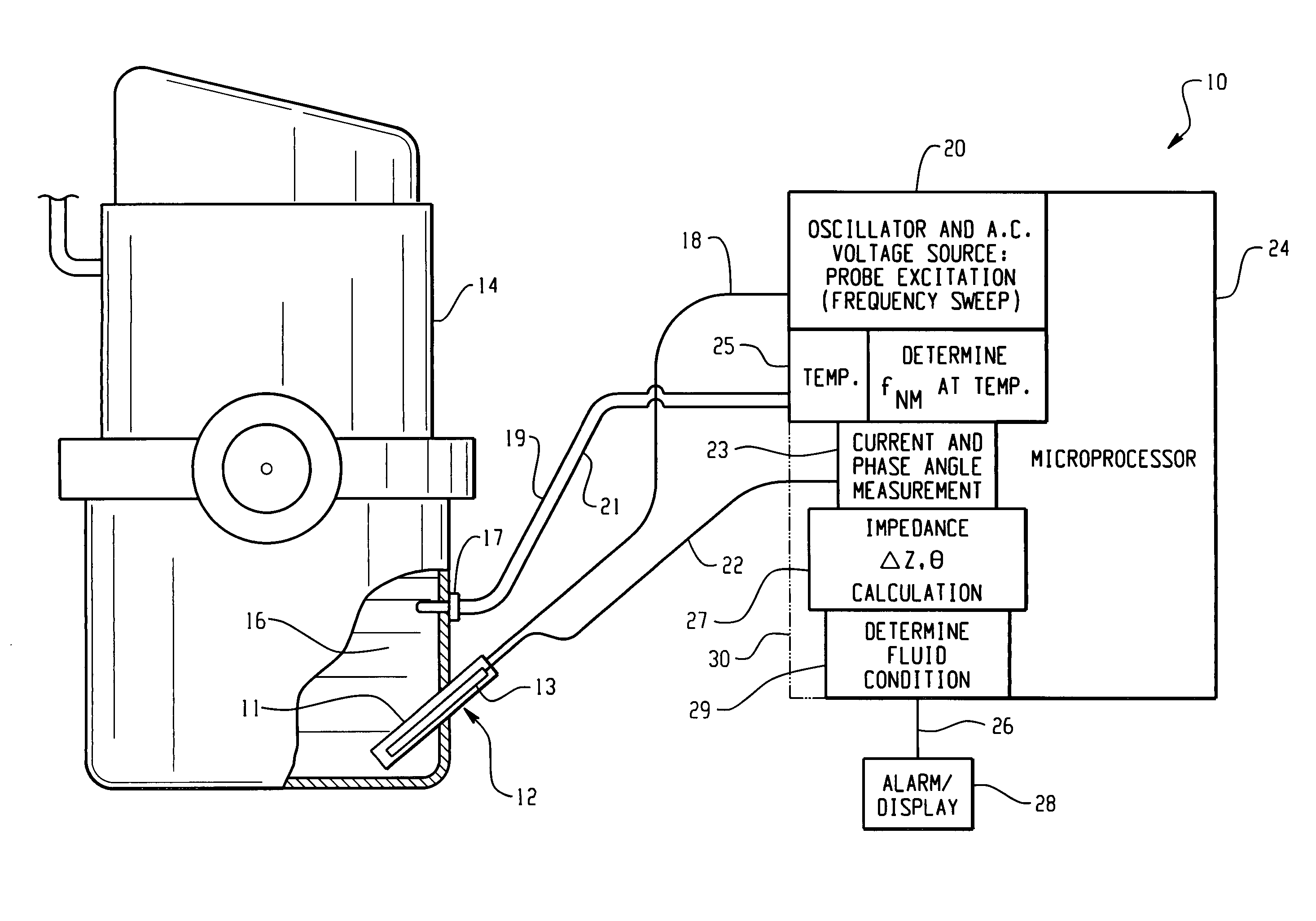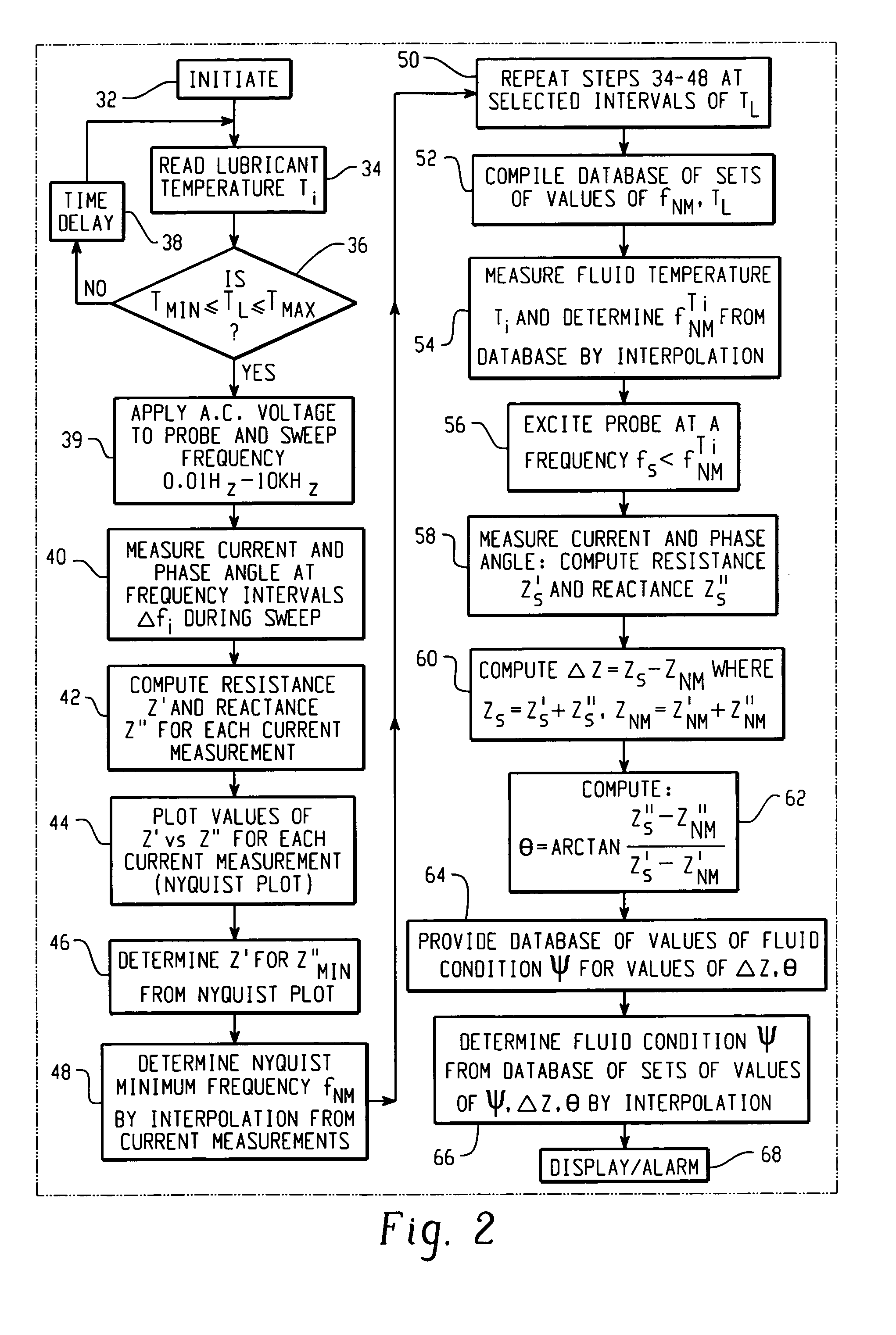In situ fluid condition monitoring
a technology of condition monitoring and in situ fluid, which is applied in the direction of resistance/reactance/impedence, instruments, material impedance, etc., can solve the problems of suspect determination of the impedance of the fluid, significant errors in the analysis of the probe signal,
- Summary
- Abstract
- Description
- Claims
- Application Information
AI Technical Summary
Benefits of technology
Problems solved by technology
Method used
Image
Examples
Embodiment Construction
[0010] Referring to FIG. 1, the system embodying the present invention is indicated generally at 10 and includes an impedance probe indicated generally at 12 inserted in through the crankcase of an engine 14 for monitoring the engine lubricant 16. The probe 12 includes an excitation electrode 11 connected by a lead 18 to voltage source 20 and pickup or measurement electrode 13 connected by lead 20 to a current and phase angle measurement section 23 connected to a microprocessor 24 in a controller 30.
[0011] A separate temperature sensor 17 is installed in the engine crankcase and is connected via leads 19, 21 to a temperature and frequency measuring section 25 of the controller 30. Controller 30 has an output 26 which provides a signal to an alarm / display unit 28 located remotely from controller 30.
[0012] The current and phase angle measurements taken in section 23 provide information to impedance calculation section 27 which in turn provides inputs to section 29 which determines t...
PUM
 Login to View More
Login to View More Abstract
Description
Claims
Application Information
 Login to View More
Login to View More - R&D
- Intellectual Property
- Life Sciences
- Materials
- Tech Scout
- Unparalleled Data Quality
- Higher Quality Content
- 60% Fewer Hallucinations
Browse by: Latest US Patents, China's latest patents, Technical Efficacy Thesaurus, Application Domain, Technology Topic, Popular Technical Reports.
© 2025 PatSnap. All rights reserved.Legal|Privacy policy|Modern Slavery Act Transparency Statement|Sitemap|About US| Contact US: help@patsnap.com



